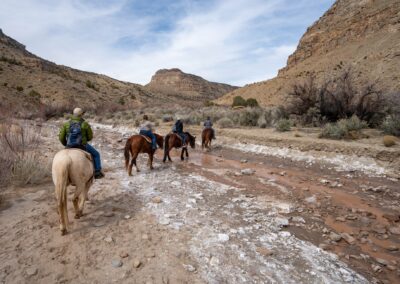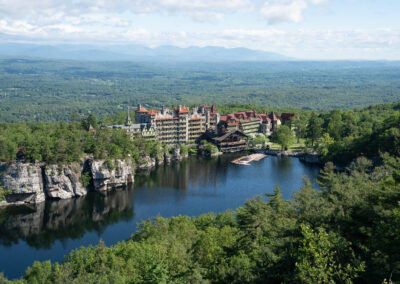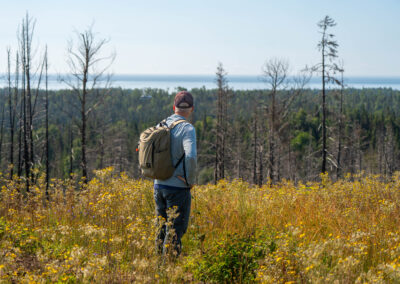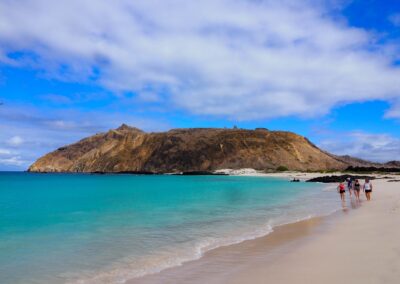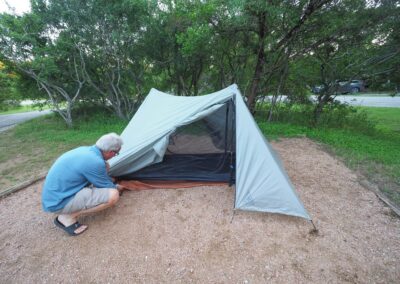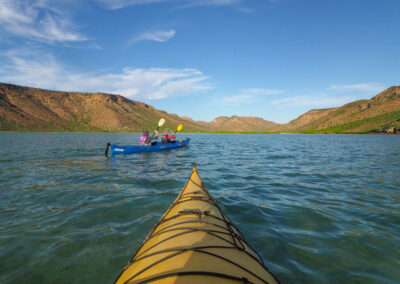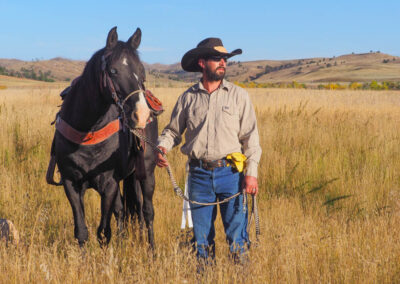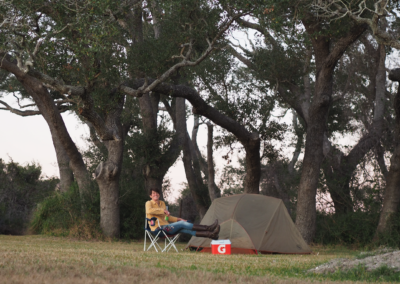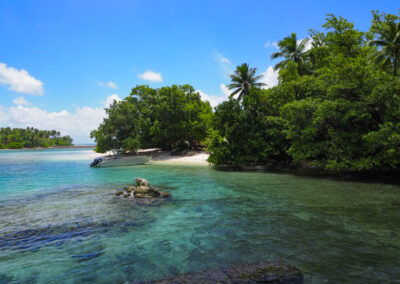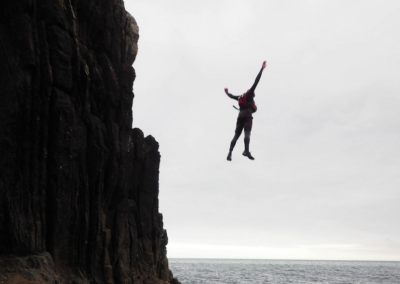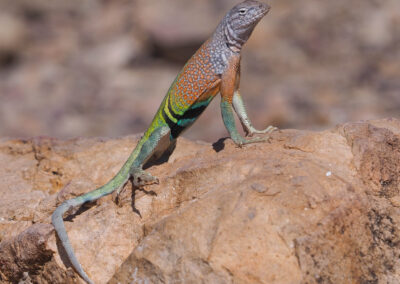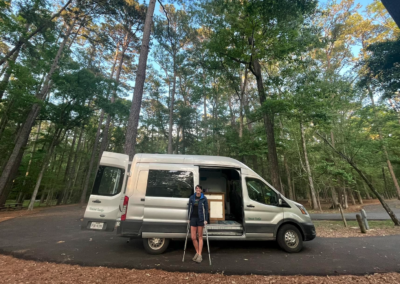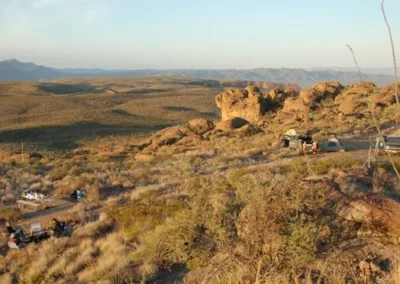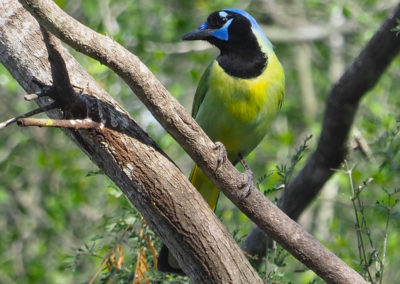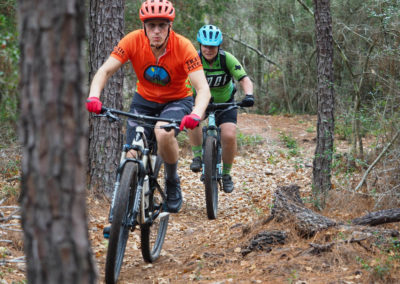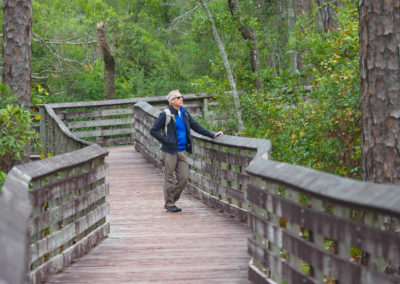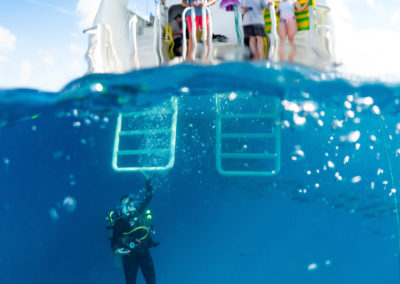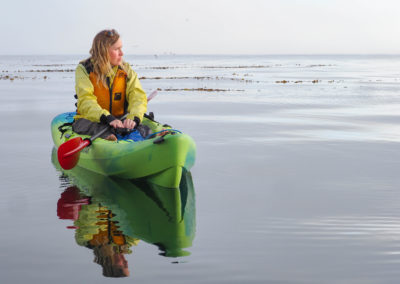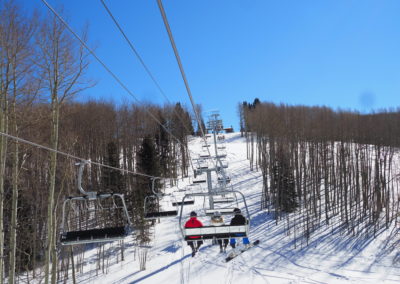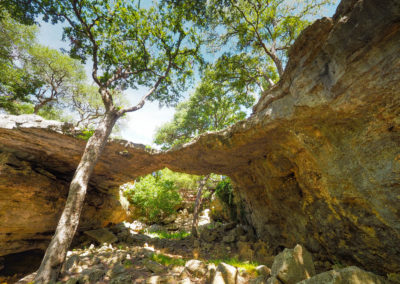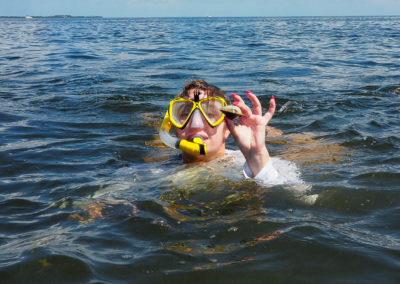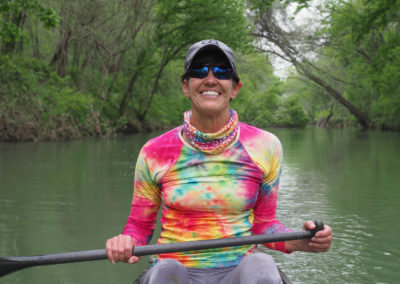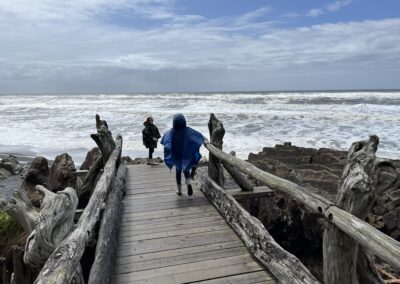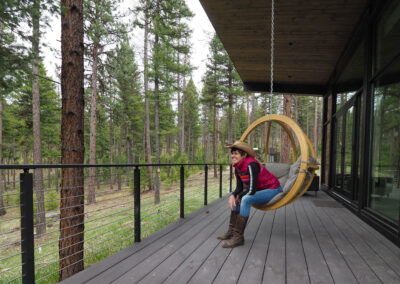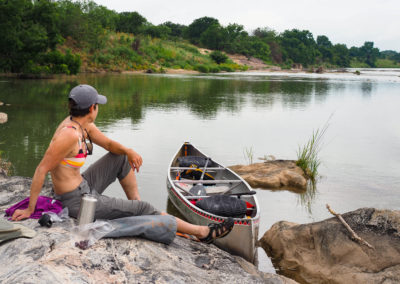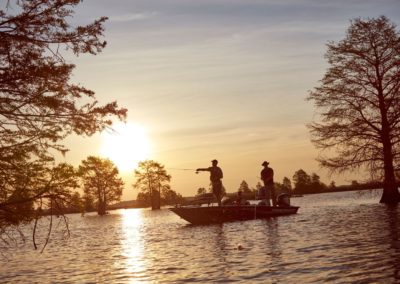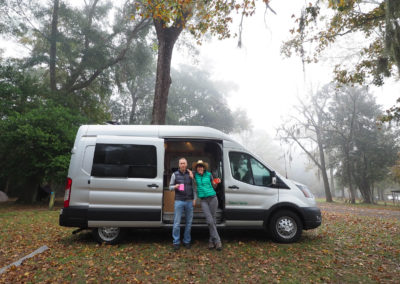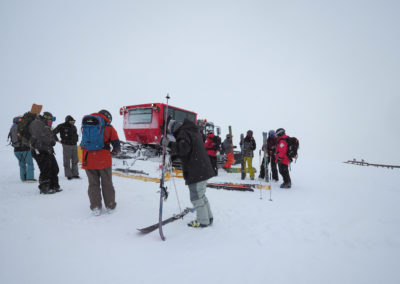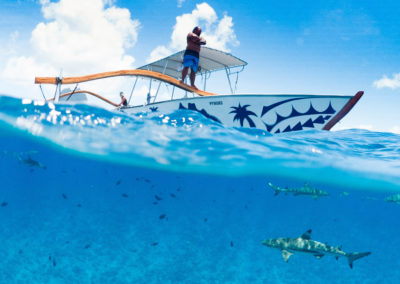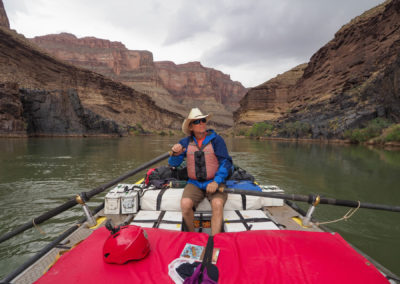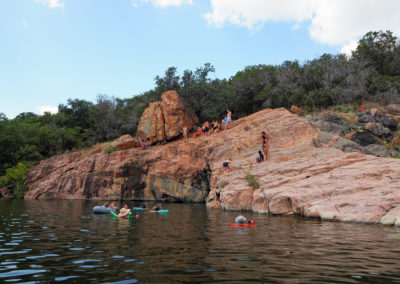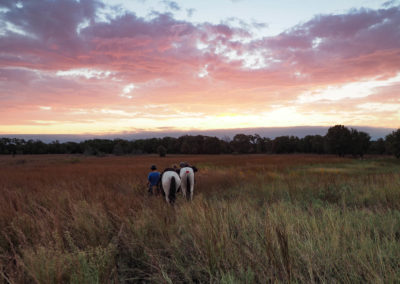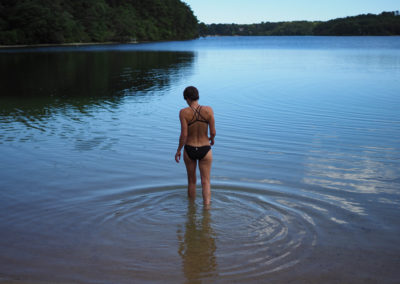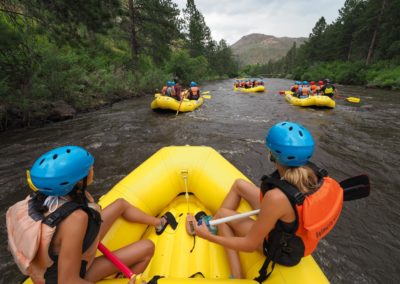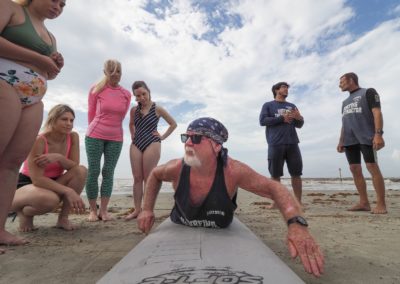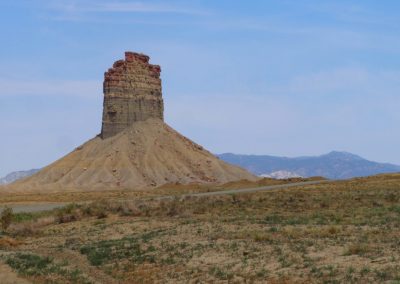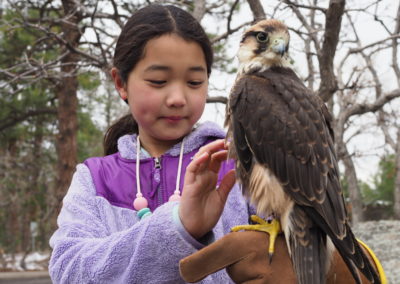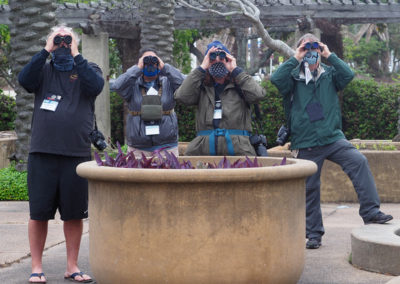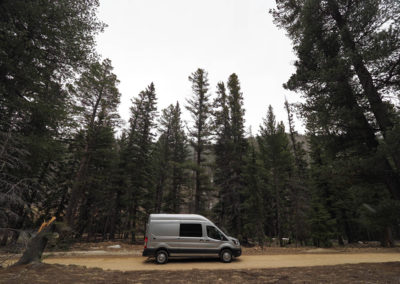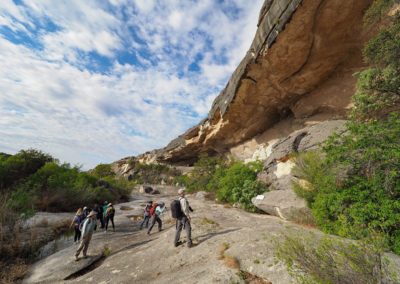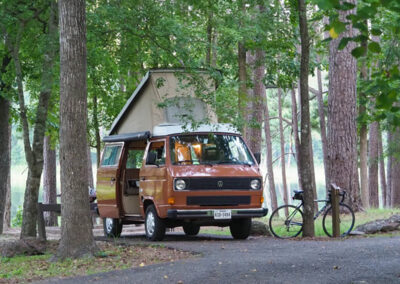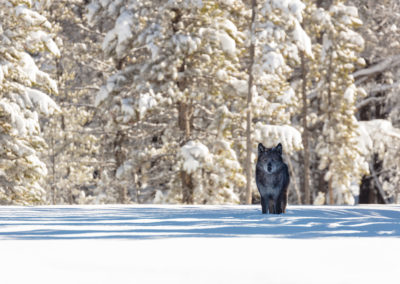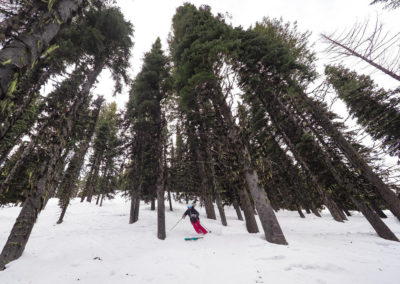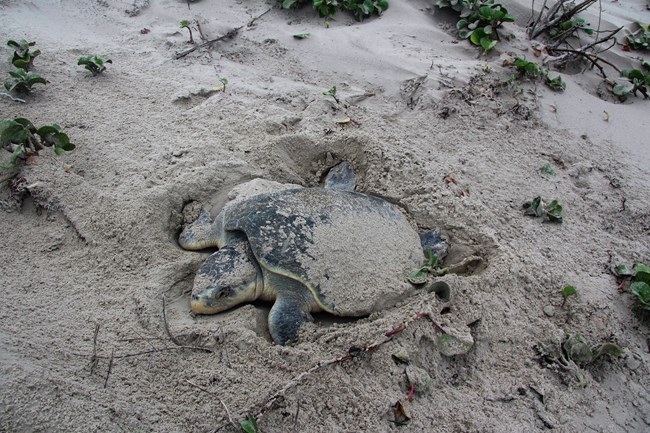
Sea turtles are starting to nest along the Texas coast. Photo courtesy National Park Service
Sea turtles are starting to nest on the Texas coast, and U.S. Fish and Wildlife Service officials are reminding visitors to keep an eye out for the endangered animals.
Kemp’s Ridley sea turtles, which are critically endangered, as well as loggerhead and green sea turtles, which are threatened, nest on Texas beaches each spring.
Many beaches are open to vehicle traffic, and if motorists aren’t careful, they can crush or damage nests or hit turtles on the beach.
“The public can help us protect these imperiled species by keeping an eye out and reporting all nesting sea turtles, their nests, and hatchlings from April through September,” Mary Kay Skoruppa, U.S. Fish and Wildlife Service sea turtle coordinator for Texas said in a press release.

Chris LeBlanc looks at a sea turtle in a tank at Sea Turtle Inc. on South Padre Island. Photo by Pam LeBlanc
Biologists and volunteers from several agencies patrol Texas beaches between April and July, looking for nests. But they rely on the public to alert them to turtle activity, too.
What to do if you see a nesting sea turtle
If you see a nesting sea turtle, call 1-866-TURTLES. If possible, stay at the site until a biologist arrives. If you can’t, surround the nest with a large circle of beach debris so biologists can find it.
Avoid disturbing the turtles, and don’t try to keep them from returning to the water after they’ve laid a nest.
Related: Fishing and Sea Turtles and Birding, Oh My: A Weekend at South Padre Island
Kemp’s Ridley sea turtles are the smallest species. They measure about 2 feet long and weigh up to 100 pounds. They usually come ashore to lay eggs in the sand during the day. Green and loggerhead turtles are larger, and typically come ashore at night.
In 1947, an estimated 40,000 Kemp’s Ridley turtles nested on a beach near Rancho Nuevo, Mexico. By the late 1980s, their numbers had declined by more than 99 percent, largely due to poaching.
A cooperative international project to protect the turtles began in 1978. Regulations requiring the use of turtle excluder devices on commercial fishing trawlers were put into place, and a second nesting colony was established at Padre Island National Seashore.
In 2021, 198 Kemp’s Ridley nests were found in Texas. That’s down from a high of 353 nests in Texas in 2017.








